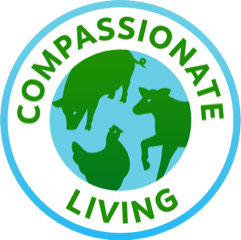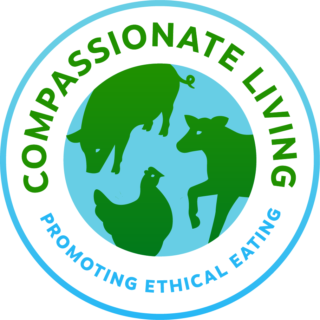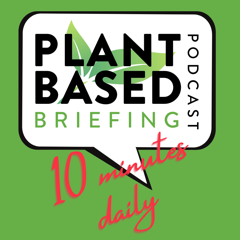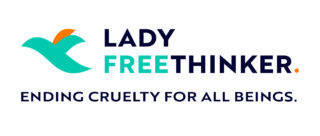Podcast Transcript
Hope
Welcome to the Hope for the Animals Podcast sponsored by United Poultry Concerns. I’m your host, Hope Bohanec, and you can find all our shows at Hope for the Animals podcast.org and I welcome your thoughts and comments, I would love to hear from you. My email is hope at UPC – online.org. This is the fifth segment of a series that we’re calling the reason for vegan series that is supplemental to our full episodes. And in these short chats, I’m focusing in on certain aspects of the animal agriculture industry. And today I’m going to talk about the ducks and geese exploited for three different commodities, the hidden cruelties of down, foie gras, and duck meat.
Ducks and geese are in the family of birds called waterfowl. Of course, because they like water they like to be in water, but also because they need water. They are evolutionarily adapted to water and water is a necessity for their health and their well-being. Waterfowl rely on water for maintaining their plumage in good condition, their feathers for keeping their eyes and nostrils clean. They need an open water source so they can submerge their full bodies and their heads underwater. Just a small trough or nipples for drinking is not sufficient.
Ducks also use water to regulate their body temperature during periods of intense heat, just like pigs. So there are three main products that ducks and geese are farmed for: their flesh or their meat, foie gras, which is their liver, and down, their feathers. And I’m going to offer some insights into all of these industries. Most all ducks and geese used for commodifying their bodies for any product live in miserable conditions. All three of these industries keep the birds in pretty much the same way. They’re crammed into dark sheds with no access to the outside, no sunlight, and no body of water.
When waterfowl don’t have a body of water and only have drinking water, they can have all kinds of problems that other birds don’t have. They can’t clean their eyes and nostrils properly, they can have extremely dry skin. Waterfowl are naturally meant to bathe in and interact in water all day. In an experiment designed to assess the level of motivation for water, they forced ducks to lift heavily weighted doors to gain access to both food and then there was a separate heavy door for access to bathing water. And the ducks exerted the force to lift both doors equally, not just for food. So that suggests that they have an internal drive to swim that’s as strong as their drive to eat, and that they need a large body of water just as much as food. Of course, we don’t condone experimenting on animals in this way. But because these types of experiments are performed, we will use the data and report the data in hopes of gaining sympathy and empathy and more understanding for these animals.
In another study, they made ducklings traverse these high barriers to access water. And the birds, the little ducklings, would go much longer distances to actually get to tubs of water that they could swim in. They would pass up bell drinkers and drinking nipples so they could actually reach the water where they could get in and swim. And the researchers concluded that even ducklings prefer wider deeper water sources that allow for a greater range of activities and full body submersion. So these studies and just common sense observation tell us that waterfowl need water for their well-being. That is completely denied when they are commodified for products.
So birds bred for their meat live in misery for a brief life and are sent to a brutal slaughter at about seven or eight months old for ducks, just a few months more for geese. They never live a full year of life when they’re farmed for their meat.
Waterfowl have evolved to need water in numerous ways, and one problem they face without water because they’re unable to dunk their heads and rinse their eyes which they do numerous times a day normally. Ducks develop an eye disease called and I’m not going to even try to pronounce this word. It’s spelled O-P-H-T-H-A-L-M-I-A, or sticky eye is what it’s called. And with sticky eye, they get this yellowish discharge from their eyes and it mats down their feathers, causing their eyelids to stick shut. And sticky eye can cause birds to be disoriented, unable to see properly, their eyes are irritated, and if it’s left untreated, they can go blind. And not surprisingly, sticky eye is a common disease that ducks suffer from when they’re raised indoors and without a body of water.
So birds in the foie gras industry, and we’re going to talk about foie gras now, are in the same horrible conditions and on top of living in filth and not having any water that’s so critical for their existence. They are force fed by placing a long tube down the bird’s esophagus and pumping an unnatural quantity of food directly into their stomachs. It’s way more food than they would eat naturally. Force feeding causes the birds’ liver to enlarge and become diseased and that is the foie gras delicacy. Foie gras means fatty liver in French.
There is substantial scientific evidence suggesting that force feeding causes pain and injury from the feeding tube insertion, it can scrape and bruise and cut their throat and esophagus, hemorrhaging and inflammation of the neck is common. And these injuries can get infected because of course, they’re given no medical attention. They’re just left to fester. Birds experience so much fear and stress during the capture and rough handling of the forced feeding. Undercover video has shown birds cowering in the corner as far away from workers as they can possibly get. And then workers grab them by their wings or their neck, holding them down, forcing this wide tube down their throats. I mean the birds are writhing. It’s brutal to watch. They suffer from broken wings, other broken bones because of the violent forcible handling just in the weeks that they’re alive. They suffer from pathologies in liver function, abnormalities and distress due to distended livers, diseases of the respiratory and digestive tracts, increased mortality, they just sometimes die from liver disease or other ailments before they’re even slaughtered. I mean, the list of diseases they are prone to suffer, it’s super long, incredibly extensive. I’m not going to go into it all. But it’s just horrible.
They start force feeding the birds when they’re about 10 weeks old, and they do it two to six times a day, till they’re slaughtered at about 14 or 15 weeks old, just about 100 days of life. At that time, their livers are six to 10 times their normal size. So in just a few weeks, that’s how bloated and diseased their livers become.
Foie gras is one of the high profile animal products like veal that’s kind of been singled out for their egregious cruelty. And it was successfully banned in California. And that ban went into effect in 2012. And it was just upheld in the courts. Lawyers from the foie gras producers tried to get the law overturned, but luckily it was upheld and restaurants in California are still not allowed to sell it. It’s also banned in 16 countries. Argentina, Denmark, Finland, Germany, Israel, Italy, Norway, Poland and the United Kingdom have all banned foie gras. So the US is behind Europe as usual and other places in allowing the continuation of this horribly cruel product.
The other product I want to talk about that exploits ducks and geese is down. Down is the soft breast feathers and undercoating of waterfowl. It insulates them and keeps them warm in water. The practice of plucking the feathers from their bodies when they are alive is called “live plucking.” Many people think that down is just a byproduct of the bird meat industry and they only get the feathers once the bird has been slaughtered. That is untrue. The majority of down comes from live plucked birds. Down is often mixed with chicken feathers that are plucked from chickens’ bodies at the slaughterhouse after they’re killed. So that is true. But duck and goose down is particularly good for insulation and is desired in products. And there are many operations specifically dedicated to live plucking for down, so birds are plucked over and over again; the feathers grow back. So it’s not only just after slaughter.
Because the plucking process is so painful and frightening and stressful, with the workers grabbing the birds roughly handling them. The birds will defecate on the workers during the process because of the stress and anxiety of plucking. And the industry doesn’t want to soil the feathers. So an added horror is that food is often withheld for 24 hours or more before the plucking. So withholding their food can cause further misery first, they don’t understand why they’re not being fed, and it causes birds to be weak and feel sick and disoriented during the painful plucking. Workers will generally hold down the birds by pulling their necks back and holding their necks between their knees and then plucking the breast feathers birds. The force of this procedure can cause injury especially to the neck and the wings. It’s terribly frightening and painful and can leave open bloodied wounds, raw skin on the birds, chests and belly. Plucking causes tissue damage. It can inflict bleeding, bruising other skin injuries.
Live plucking is practiced mostly in Europe and Asia with Hungry and China being the largest producers. China manufacturers about 80% of the down used worldwide and it’s estimated that 60 to 70% of the down market does come from live plucked birds. There are numerous videos showing the cruelty of live plucking, and one of these that I watched was especially heart wrenching. It was a video of undercover footage of a Hungarian goose farm where the birds were seen forced to lie on their backs while being plucked. And the birds are calling out in panic. They’re writhing and thrashing, trying to escape what’s happening to them and vocalizing loudly. After the plucking, workers are seen with needle and thread, sewing up open wounds on the bird’s chest that are just bleeding profusely, all without anesthesia. It was gruesome.
So you can help end this suffering by avoiding down products and telling manufacturers not to buy down products that can be down filled are coats, jackets, vests, comforters, pillows, sleeping bags, other bedding. So read labels and be sure you’re not buying down. Also, if you’re staying in a hotel, if we’re ever able to travel again, you can tell them you don’t want any down bedding in your room. Often they think that people make this request due to allergies. So you might want to add that you are allergic to animal suffering. So they know why you’re making the request and you are making the request for the animals.
There is of course hunting and killing of wild geese and ducks as well. I’m not going to go into that because we’re focusing on domesticated birds here. But just to mention that, I think it’s so horrible that geese are often considered nuisance animals. I really hate that term. Just because they’re gathering where people don’t want them or leaving droppings where people don’t want them or honking or making noise. We have taken over the wild places that were their homes. And then we don’t want to be a good neighbor and live with a bit of inconvenience. So they can be rounded up and whole flocks are rounded up and killed.
So I’m going to wrap it up here. Thank you so much for listening to our reason for vegan series. I welcome your feedback and thoughts on this or any of the podcasts. My email is Hope at UPC – online.org. We can help in the suffering for these birds together by boycotting these terrible industries and never buying or supporting down, foie gras or duck meat. Please help protect waterfowl and live vegan.




